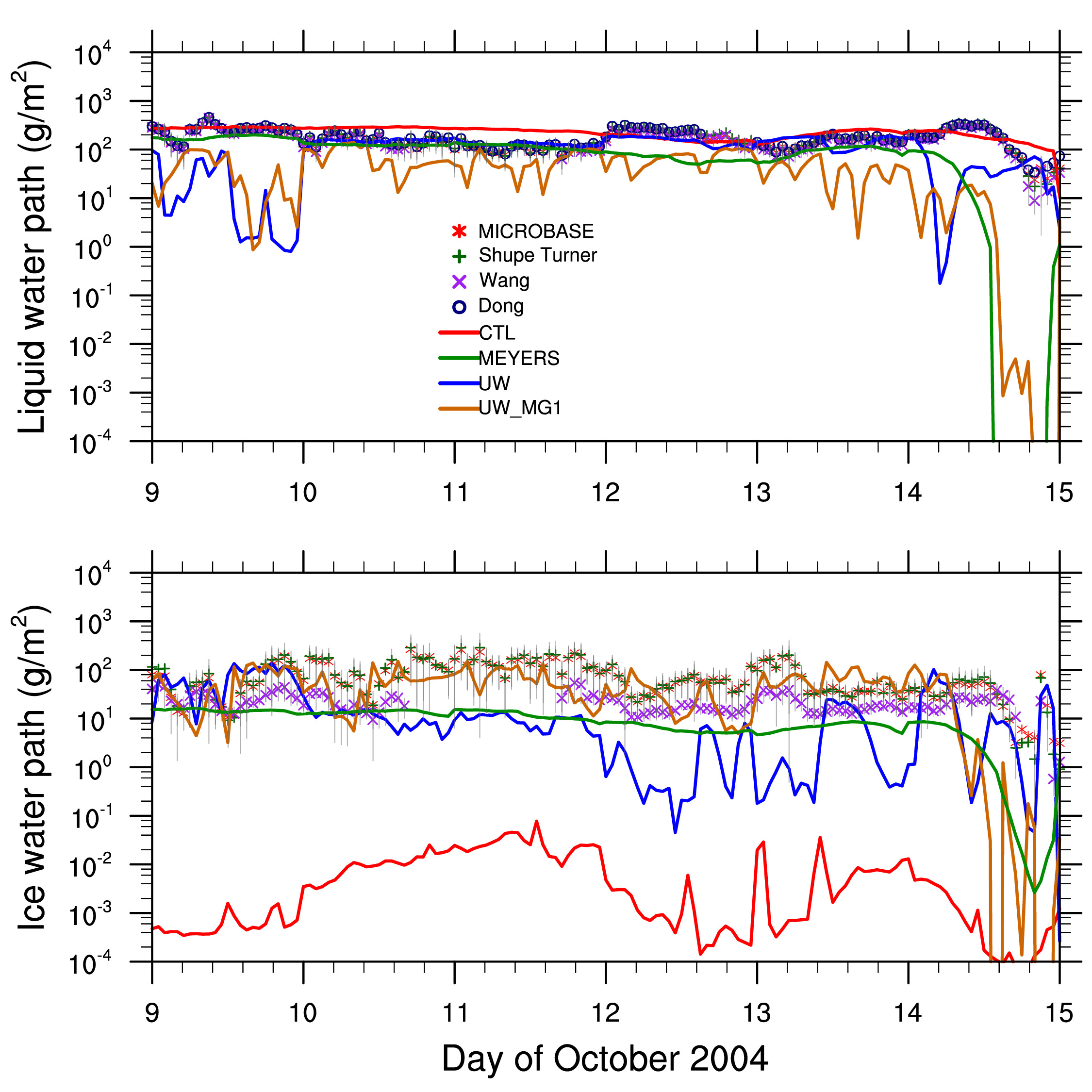Understanding the simulated phase partitioning of arctic single-layer, mixed-phase clouds in E3SM
Submitter
Liu, Xiaohong — Texas A&M University
Area of research
Cloud Processes
Journal Reference
Science
Cloud physical processes are important for the production and sustenance of mixed-phase clouds, but their crude parameterizations generally result in large uncertainties in the phase partitioning of mixed-phase clouds simulated in general circulation models (GCMs). The representation of cloud physical processes such as primary ice nucleation, turbulence, and detrainment from shallow convection has been updated in the development of the U.S. Department of Energy (DOE) Energy Exascale Earth System model (E3SM) from its predecessor, Community Atmosphere Model version 5 (CAM5). In this study, we conduct a process-level analysis to investigate the impact of changes in cloud physics parameterizations on the phase partitioning of high-latitude, single-layer, mixed-phase clouds.
Impact
This study examines the impact of parameterization changes in heterogeneous ice nucleation, turbulence and shallow convection, and cloud microphysics on microphysical and macrophysical properties of arctic mixed-phase clouds in E3SM version 1 (E3SMv1) compared to CAM5. Results suggest that E3SMv1-simulated arctic mixed-phase clouds are overly dominated by supercooled liquid water with little ice production, which is in dramatic contract to CAM5. The underestimated ice crystal production from heterogeneous ice nucleation and detrainment from shallow convection are found to decrease cloud ice water content through reduced ice mass growth rates. Particularly, reduced ice number concentration produced from the Classical Nucleation Theory (CNT) ice nucleation scheme at temperatures warmer than -15°C and negligible ice processes in the Cloud Layer Unified By Binormals (CLUBB) parameterization are primarily responsible for the underestimation of ice water content and overestimation of liquid water content.
Summary
In this study, we use the short-term hindcast approach (DOE Cloud-Associated Parameterizations Testbed (CAPT)) to understand which physical process is most responsible for the significant behavior change in the arctic single-layer, mixed-phase clouds simulated by the E3SMv1 compared to CAM5. Hindcast results show that the amount of ice water content is substantially underestimated in the default E3SMv1, particularly for the single-layer stratiform mixed-phase clouds when compared to observations obtained during the ARM Mixed-Phase Arctic Cloud Experiment (M-PACE) field campaign. On the other hand, liquid water content is overestimated. By tracing back changes made in E3SMv1, we find that uses of the CNT scheme, CLUBB parameterization, and MG2 microphysics scheme all tend to decrease ice water content. A detailed budget analysis of cloud microphysical process rates indicates that the initial ice particles, produced from heterogenous ice nucleation and detrained from shallow convection, are critical for the ice mass increase through subsequent cloud microphysical processes. When CNT and CLUBB replace the Meyers ice nucleation scheme and the University of Washington schemes (for turbulence and shallow convection), respectively, a minimal number of initial ice particles are generated and passed to subsequent cloud microphysical processes. As the mass growth rate of ice crystals depends sensitively on the number concentration of ice particles, simulated cloud ice mass mixing ratio is then substantially reduced.


